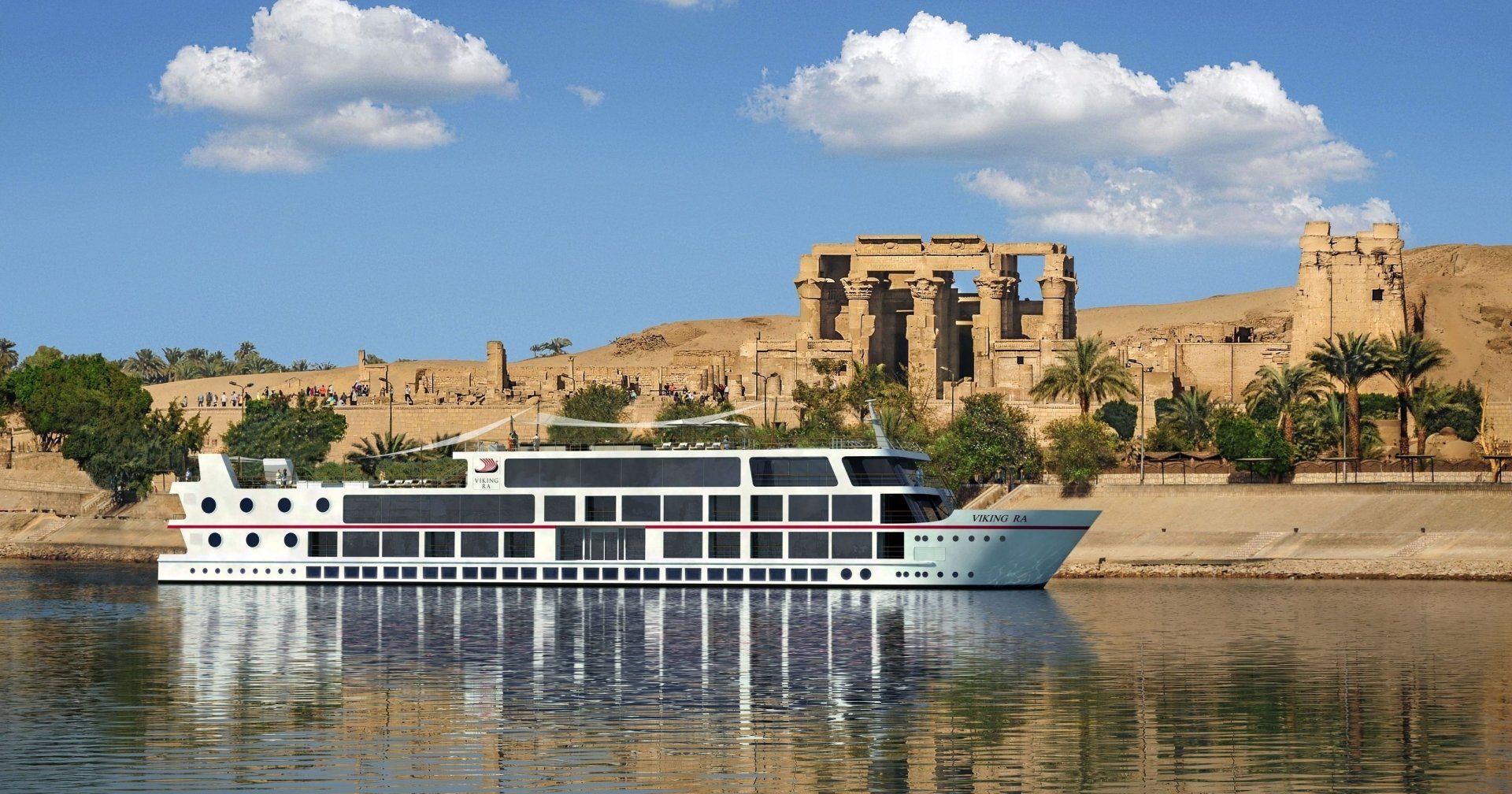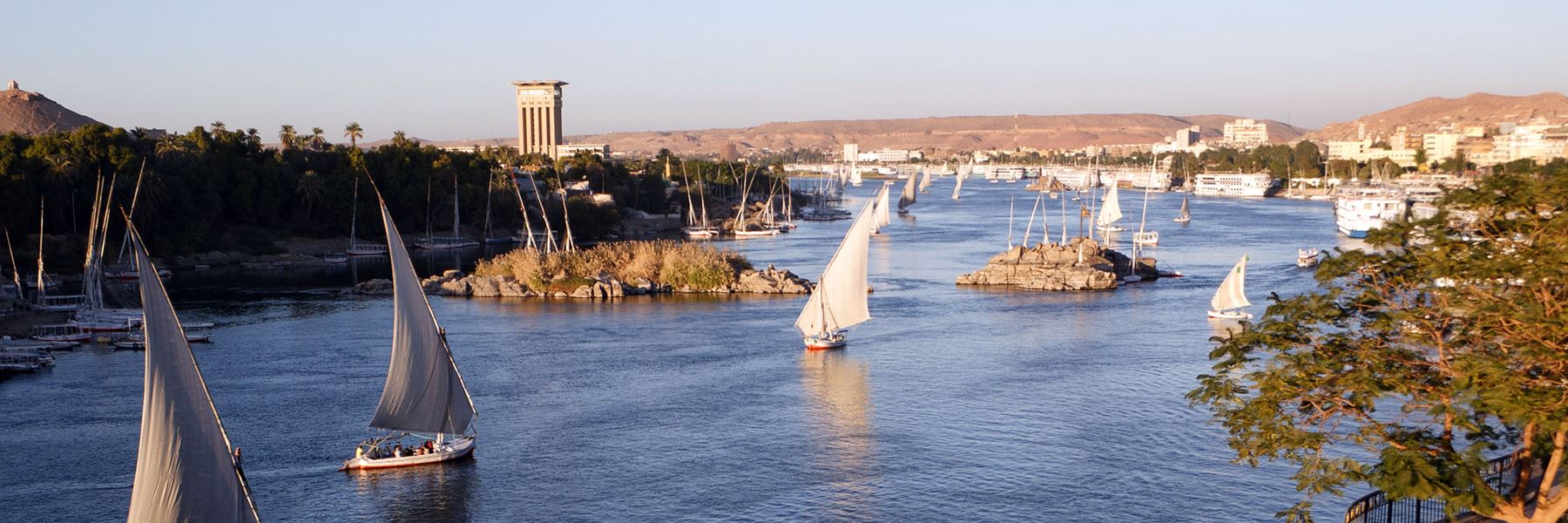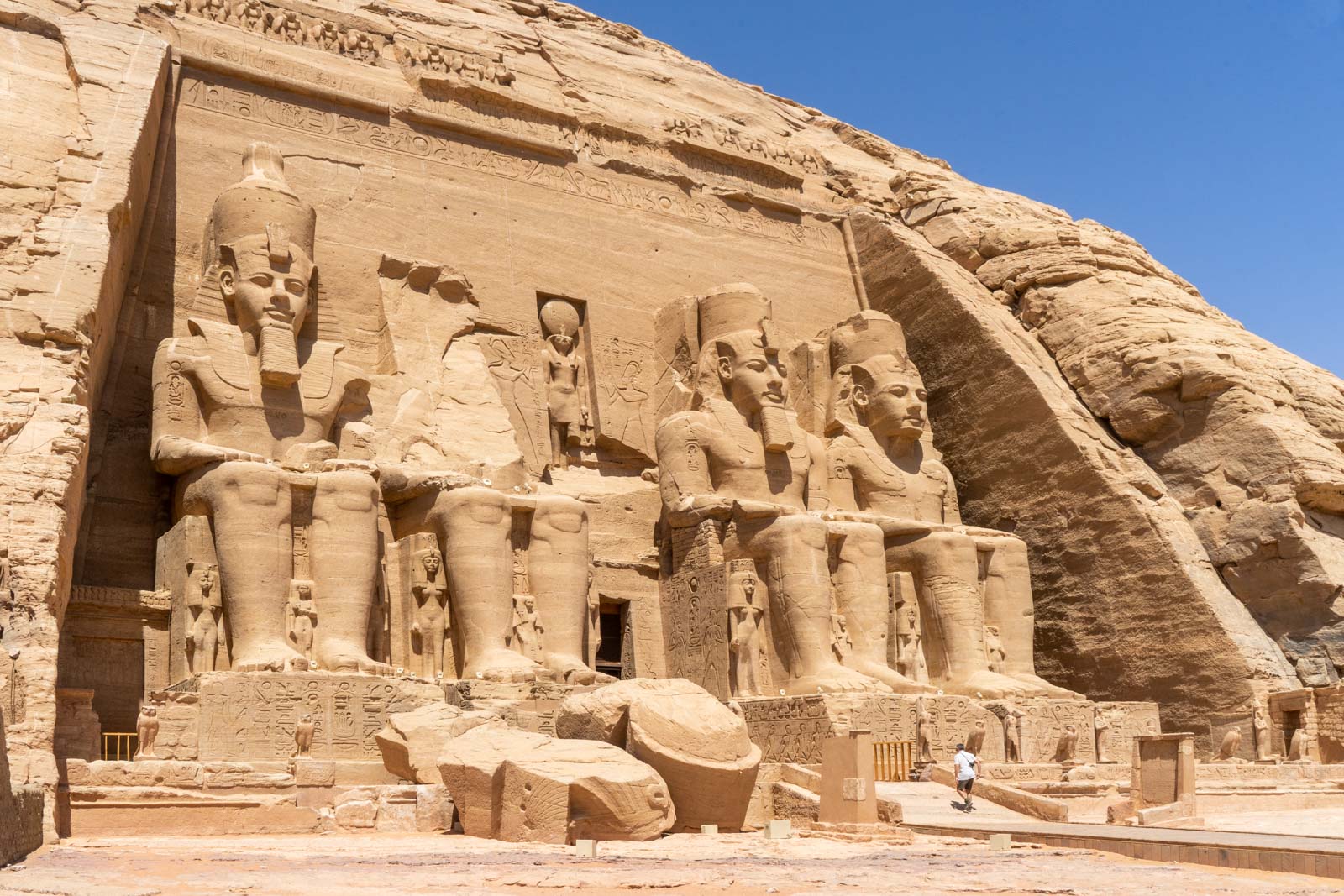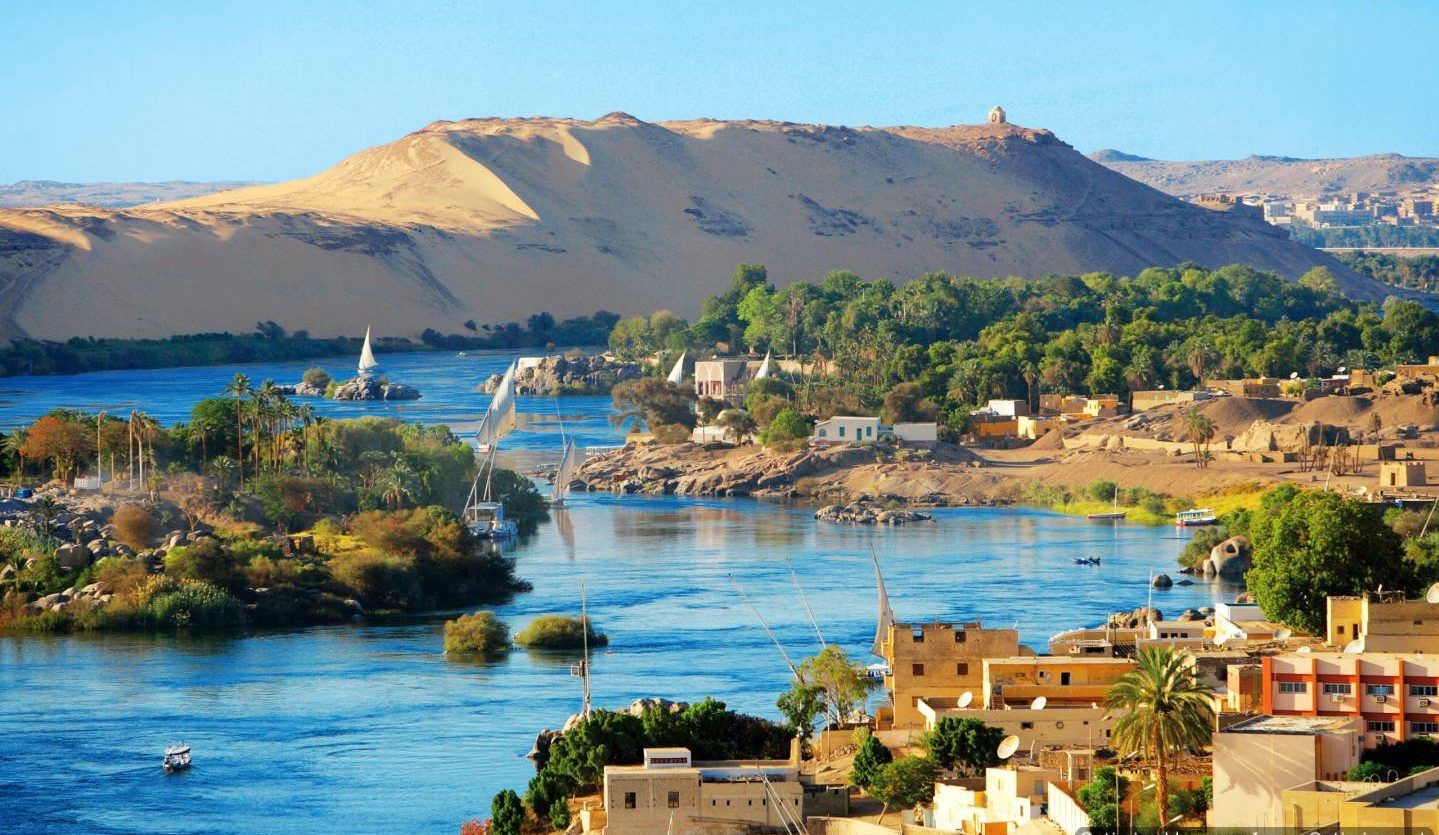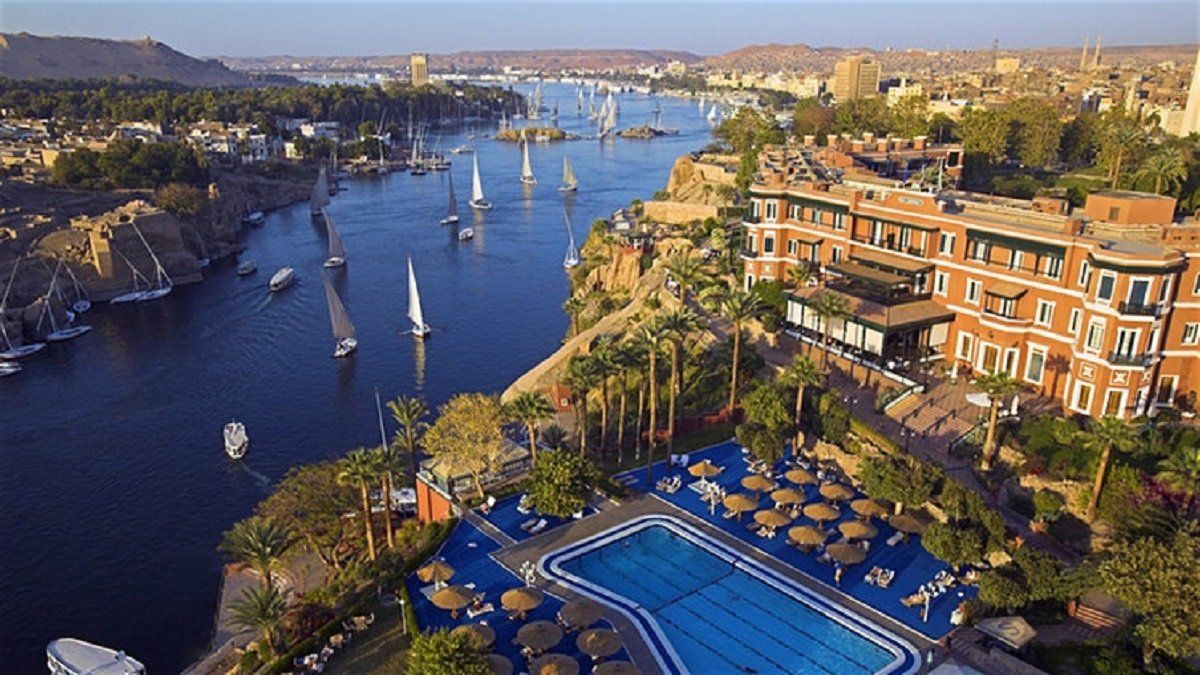Aswan
Unfinished Obliesk
The Unfinished Obelisk lies, in its original location, in a granite quarry in Aswan. It is 42m in length and was most probably abandoned when some cracks appeared in the rock, during its construction. Had this obelisk been completed, it would have been the heaviest obelisk ever cut in Ancient Egypt, weighing nearly 1100 tons! It is believed that it was constructed and abandoned during the reign of Queen Hatshepsut (18th Dynasty).The unfinished obelisk. During the earliest ages, the Ancient Egyptians knew the so-called ” Pn-pn”, which was a pyramidal stone with a pointed top and according to their beliefs the “Pn-pn” symbolized the primeval hill from which the world first appeared. Then, in the course of time, this Pn-pn evolved to be an obelisk usually made of granite with a pyramidal shape on top.
Philae Temple
Philae Island was a rocky island in the middle of the River Nile, south of Aswan. It was called in Hieroglyphic “Apo” which means Ivory. It was also known by the Greek “Elephantine”, most probably because it was an important centre of trade, especially for ivory. The Ancient Egyptians built a beautiful and magnificent Temple on this island for the Goddess Isis, but the Temple became submerged after the first Aswan dam was built in 1906, and it was not until the seventies that many nations attempted to save the Temple. All these countries, together with UNESCO, selected a suitable place, but they had to wait until the completion of the High Dam, in 1971, which would stabilize the level of the water around their chosen island. The new island was calledEgilica (also calledAgilika), and it was completely reshaped to imitate Philae Island as closely as possible
High Dam
The High Dam of Aswan is one of the most important achievements of the in the last century in Egypt, even for many years it was a symbol of the New Era of the Revolution of 1952. It provided Egypt with water and electricity and secured the country of the risk of the destructive inundation. After the revolution of July 1952, President Nasser announced his proposal for building the High Dam, but was met with Western refusals to co-operate, so he turned to the Soviet Union for both technological and financial aid. The result was the present rock-filled structure. The work began on the 9th January 1960 and the completed dam was opened in the spring of 1971. This gigantic building is 111m tall, 3.5Km in length and about 1Km wide! It has a Hydro-electric plant, with 6 turbines, capable of producing 2.1 million kilowatts.
Edfu Temple
Consists of traditional elements of Egyptian Temples of the New Kingdom, together with a few Greek elements, such as the Mamisi, which is situated to the west of the main entrance of the Temple (Mamisi means “house of the divine birth”). It consists of an entrance, a court and chapel. The walls of the mamisi are decorated with scenes showing the story of the divine birth of Horus the child, in the presence of the Goddess Hathor, the God Khenoum and other deities who were concerned with pregnancy and birth. The Temple has a Pylon that is considered the highest among surviving Temples in Egypt today. It is 37m high and is decorated with battle scenes, representing King Ptolemy VIII smiting his enemies before the God Horus.
Kom Ombo Temple
The Location of the Temple of Kom Ombo. The small town of Kom Ombo is situated on the East side of the Nile, 45 kilometers to the North of the city of Aswan, about 800 kilometers to the South of Cairo, the capital of Egypt. Surrounded by fields of sugarcane and corn, Kom Ombo is a pleasant agriculture town that now hosts many Nubians that were displaced after when the water of the Nile flooded their hometowns after the construction of the Nasser Lake. The imposing Greco Roman Temple of Kom Ombo is featured with its marvelous setting directly overlooking the Nile. This is why a visit to the temple is usually included in all the itineraries of Nile cruises that sail from Luxor to Aswan and vice versa.


